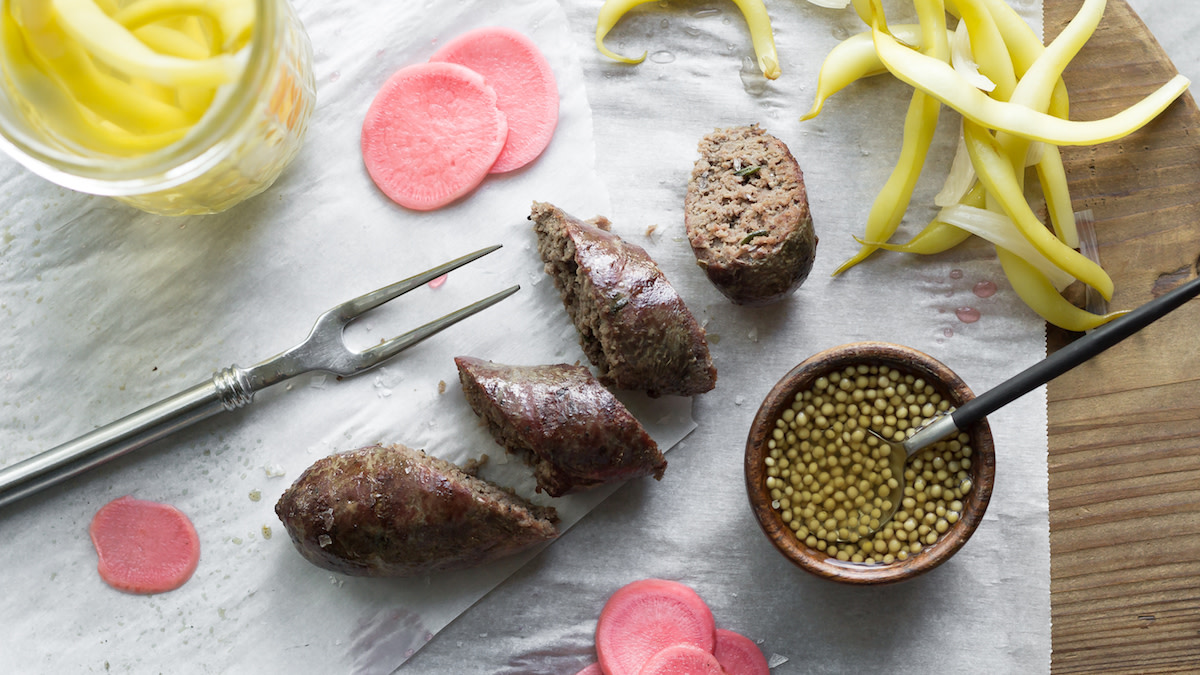
Like so many Americans during the pandemic, I’ve found myself eager to try new things in the kitchen. Recently I wanted to make venison chorizo and andouille sausage, but I had one problem—no pork fatback. So I wondered, can you make sausage without animal fat?
A sausage without fat isn’t a sausage. It’s essential for making the meat juicy and succulent. I’ve heard of animal fat alternatives to fatback and tallow, such as powdered milk or sautéed veggies. I’m sure those are adequate substitutions, but I don’t want to completely change the flavor profile. Adding milk to a red wine sausage just won’t make the same product.
Every recipe I find for sausage includes animal fat, including those in one of my favorite cookbooks, “Charcuterie” by Michael Rulhman and Brian Polcyn. However, I noticed they mentioned the use of oil in sausages, but left no tips for how to incorporate it. I decided this was worth some experimentation.
To replicate a traditional sausage, it helps to have an understanding of basic sausage anatomy: 70% meat, 30% fat, and 10% of the total volume in liquid, plus seasonings. You send the meat, fat, and seasonings through the grinder and then blend with an ice-cold liquid. This forms the primary bind that you stuff into casings.
When done correctly, it holds together like an emulsion or a temporary blend of two things that don’t mix—water and oil. The secret to success is keeping everything cold during each step of the process. This part is essential. Otherwise, the sausage will “break,” resulting in a dry, crumbly texture.
The issue with substituting a viscous oil, like olive or avocado, instead of animal fat is the texture isn’t the same. If you were to grind it just like a standard sausage, you’d end up with a big mess. Almost all oils are too soft, even when chilled, except for coconut oil.
After some experimentation, I learned that it’s best to work backward. I used the exact same ratios as a traditional sausage, but instead of mixing the meat and fat first, I emulsified the liquid and oil by pureeing them together in a blender. Then I transferred this mixture to a freezer to harden.
Once the emulsion had almost solidified, I blended it into straight ground venison with seasonings. I stuffed them into hog casings which I twisted into links. I allowed them to air dry in the fridge overnight before cooking.
The result was surprisingly delicious! I was worried I would miss the richness of fat, but the oil provided the same succulence as pork and allowed the venison to shine.
There are pros and cons to using oils in sausages instead of animal fat. Oils are easy to find at the grocery store, whereas pure white fatback is hard to come by. On the downside, I learned firsthand that oil leaks from the holes I pricked in casing, causing pretty big flare-ups on the grill. To resolve this issue, you can cook over indirect heat, smoke, or poach the sausages.
Another thing I noticed is a different, less chunky texture. However, this smooth emulsification of meat and oil might make the best hotdog you’ve ever had.
If you find yourself wanting to make sausage without domestic animal fat, whether that’s because you can’t find it or want a healthier option, consider using olive oil instead. To help you get started, try our fresh venison sausage with olive oil recipe, which will publish on our site in a few days.






Conversation